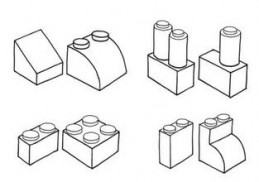Yes, congenital blind can learn to link vision and touch
April 12, 2011
Researchers at MIT have shown that the brain does not have an innate ability to connect different types of sensory input, but can quickly learn to do so.
The researchers tested five children with treatable forms of blindness to answer the question: could they visually distinguish between objects that they could previously only identify by touch? This question was first raised by scientist William Molyneux over 300 years ago.
Each patient was born blind and agreed in advance to participate in the study. Each had surgery to restore his or her vision through a humanitarian program called Project Prakash. (“Prakash” is the Sanskrit word for light.) Each was tested within 48 hours of surgery, shortly after his or her bandages were removed.
In the first test, the children were shown a novel object made from plastic parts, which was then taken away. Then they were shown two objects and asked to identify the original one. The test established that the children could see well enough to identify the relevant properties of the object, and that they understood the task.

Four examples from the set of 20 shape pairs used in the experiments (credit: Pawan Sinha et al./Nature Neuroscience)
The children performed this test with more than 90 percent accuracy. They also performed well in a test where they had to identify, by touch alone, an object that they had earlier handled.
In a subsequent test, the patients were asked to visually identify an object they had previously held. In this test, their answers were not much more successful than guesses.
A week later, however, they were tested with different objects than those they encountered during the first session, and showed dramatic improvement. They did not receive any kind of training between the two sessions.
The study showed that while the patients were not immediately able to make the connection between what they saw and what they felt, they acquired that skill within days after surgery, the researchers said.
Ref.: Umang Mathur & Pawan Sinha et al., The newly sighted fail to match seen with felt, April 10 online edition, Nature Neuroscience
